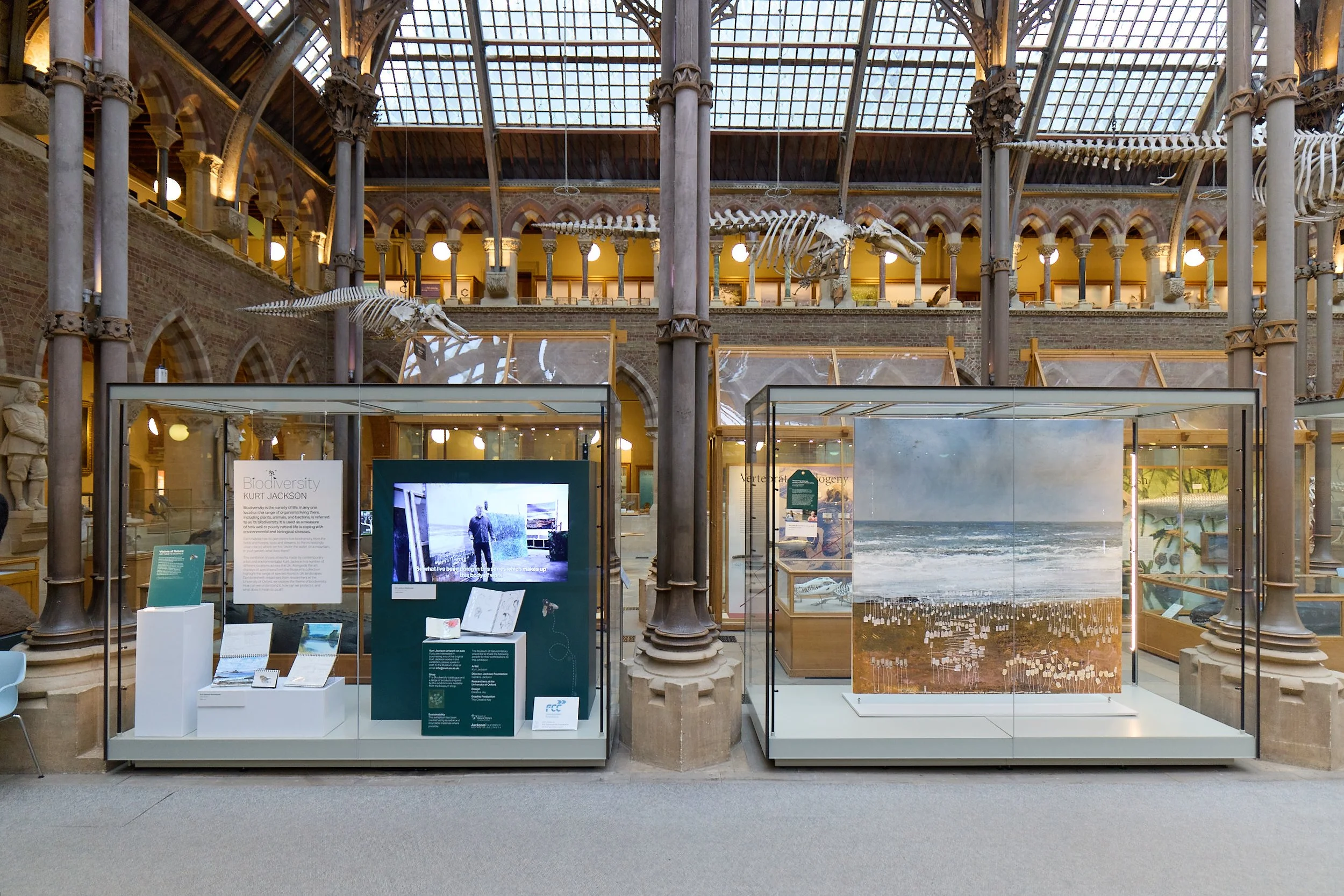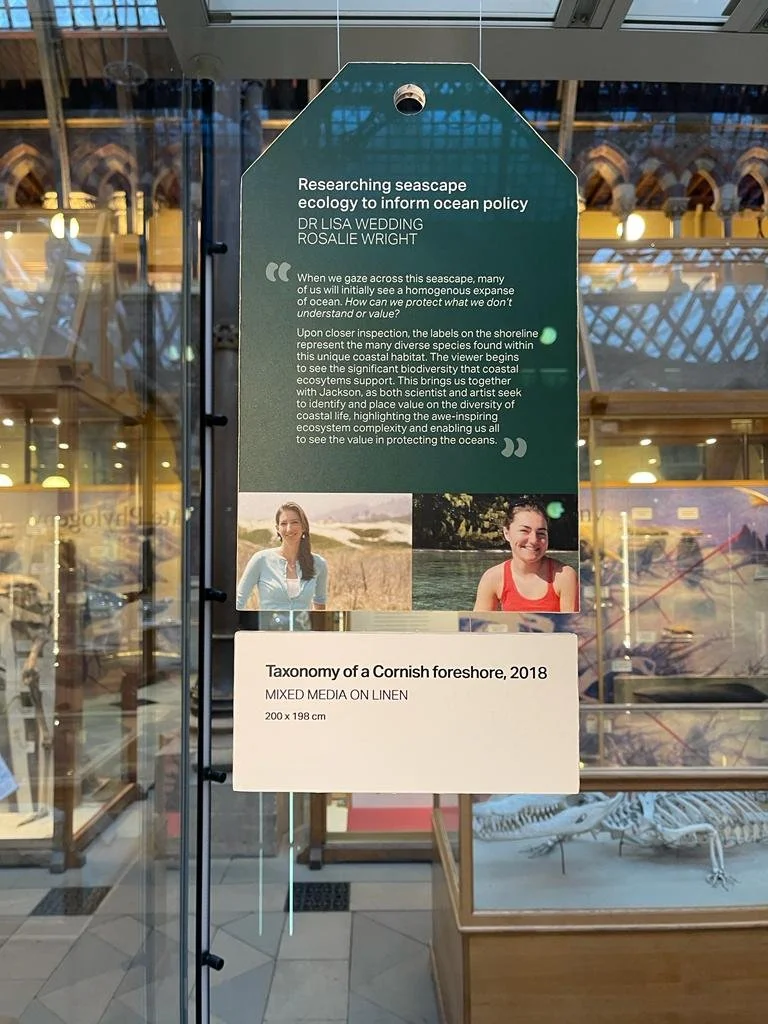Kurt Jackson and the Oxford Seascape Ecology Lab: Biodiversity exhibition
The Oxford Seascape Ecology Lab joins British artist Kurt Jackson for an innovative exhibition at the Oxford University Museum of Natural History.
By Rosalie Wright
The impacts of climate change and biodiversity loss on our oceans and coastal habitats are increasingly apparent, meaning that now is a timely opportunity for engaging wider audiences in marine research. The Oxford Seascape Ecology lab has been participating in art-science collaborations to better communicate our research into blue carbon habitats and climate policy.
Art-science collaborations - also explored in our previous web stories on blue carbon at the Pitt Rivers Museum and COP Virtual Ocean Pavilion - can be a fantastic approach to inclusive outreach and engagement. We recently took part in an exhibition hosted at the Oxford University Museum of Natural History that featured work by contemporary artist and environmentalist, Kurt Jackson. This exhibition received almost 200,000 visitors over the course of three months.
“By being aware of the life with which we share this planet we can first appreciate it, then learn to conserve it.”
Titled “Biodiversity”, the exhibition showcased some of Kurt Jackson’s artworks amongst the Museum’s collections, suggesting the interlinkages between art, science and natural history. Jackson’s works were accompanied by responses from scientists at Oxford University to highlight connections with current research and encourage the audience to consider what biodiversity means to them.
This combination of artwork, contemporary research and museum specimens created a unique environment in which visitors could both connect with the natural world whilst positively engaging with research that tackles the biodiversity crisis. When providing a response to Jackson’s work, the scientists were also encouraged to situate their research within different contexts and explain its relevance to society.
“When we gaze across this seascape, many of us will initially see a homogenous expanse of ocean. How can we protect what we don’t understand or value? Upon closer inspection, the labels on the shoreline represent the many diverse species found within this unique coastal habitat. The viewer begins to see the significant biodiversity that coastal habitats support. This brings us together, as both scientist and artist seeking to identify and place value on the diversity of coastal life, highlighting the awe-inspiring ecosystem complexity and enabling us all to see the value in protecting the oceans.”
The Biodiversity exhibition also featured a number of special events, such as “Drawn to Nature”. At this event we were able to share our research with the general public in a more informal setting that involved museum specimens and sketching activities. The in-person events received 178 in-person attendees in total, and “Drawn to Nature” was a fantastic opportunity to share our blue carbon science with new audiences.
Following the success of our art-science collaborations, we have submitted a paper to the EGU Geoscience Communication journal that is now in review (GC Insights: Art-science partnerships for new perspectives), co-authored by an interdisciplinary team of scientists, artists and art-scientists.
Stay up to date with the paper release and our upcoming events by following us on Twitter, YouTube, and view our Outreach page here. You can also access the Online exhibition for Biodiversity and find out about more art-science events at the Museum.


